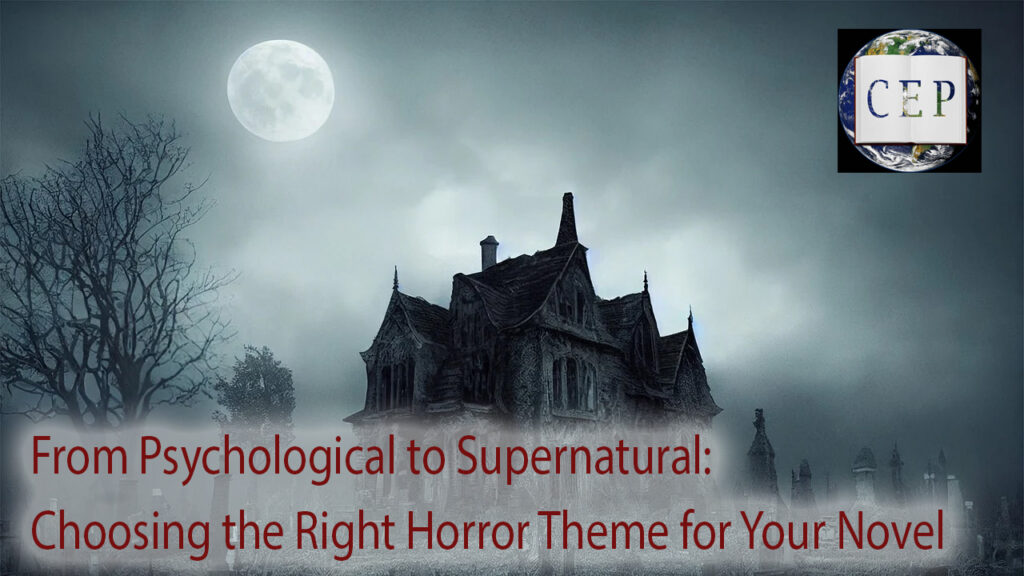
In the dimly lit corridors of horror fiction, the selection of a horror theme isn’t just a choice—it’s a crucial crossroads that sets the stage for the entire narrative. The theme you choose is the heart that beats beneath the skin of your story, determining the pulse of fear that resonates with your readers. As writers, we navigate a spectrum of fears, from the darkest corners of the mind to the realms of the supernatural. In this installment of our horror writing series, we embark on a journey to explore how the theme of horror can become the backbone of your novel, directing its twists, turns, and spine-tingling sensations that linger long after the last page is turned.
As a storyteller, you hold the power to evoke emotions that range from discomfort to dread, from unease to outright terror. Your choice of a horror theme is your invitation to readers, beckoning them to embrace the unknown, confront their fears, and experience the adrenaline-fueled rush that only the genre can provide. Whether your tale delves into the psychology of human vulnerability or entwines itself with supernatural forces beyond comprehension, the theme you select shapes the atmosphere, influences character development, and forms the undercurrent that guides your plot.

In the pages that follow, we’ll journey through the intricacies of various horror themes, from the enigmatic shadows of psychological horror to the eerie allure of the supernatural. We’ll explore how these themes play a pivotal role in crafting unforgettable experiences for your readers while also offering insights into how to choose the theme that aligns with your narrative goals. So, as we delve into the heart of horror, prepare to discover the art of selecting the perfect horror theme—a decision that could transform your novel into a chilling masterpiece.
Continue reading to unlock the secrets behind crafting a harmonious union between fear and creativity as we delve into the depths of horror themes that dwell within the genre’s very essence. Through this exploration, you’ll find the guidance you need to embark on your own journey of spine-tingling storytelling, making the most of the theme that resonates most powerfully with your narrative vision. Are you ready to traverse the realms of fear and fascination? Let’s begin the exploration together.
Understanding Horror Themes
At the heart of every haunting tale lies a carefully chosen horror theme, a thread that weaves through the narrative, igniting the reader’s imagination and fueling their fears. A theme of horror is more than a mere backdrop; it’s a vital essence that infuses the story with emotions that range from trepidation to terror, and curiosity to dread.
So, what exactly is a horror theme? It’s the pulse that beats beneath the surface, a conceptual foundation that dictates the rhythm of your novel’s progression. Each theme holds its own unique power, summoning forth specific emotional responses from your audience. A journey through a psychological horror theme can send shivers down the spine and leave lingering questions in its wake, while a venture into the supernatural realm might evoke awe, unease, or even an eerie fascination.
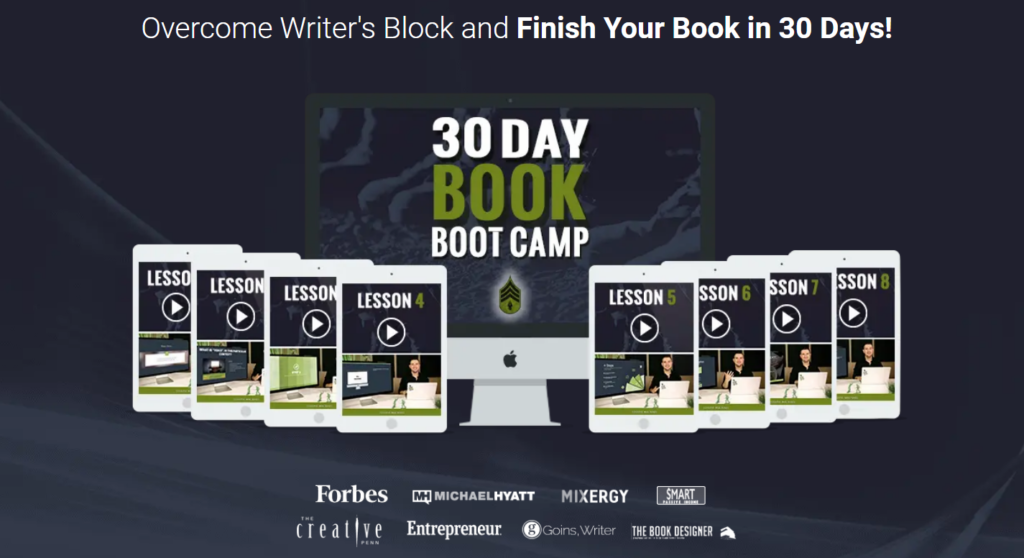
The significance of these themes is profound, as they serve as the connective tissue that binds the various elements of your story together. They provide the atmosphere that envelops your characters, the stakes that drive their actions, and the sense of foreboding that heightens tension. By understanding the power of a horror theme and how it influences the reader’s emotional journey, you gain the ability to craft a tale that resonates deeply and leaves an indelible mark long after the final page is turned.
As we navigate through the intricacies of different themes, it’s important to recognize that each theme has the potential to evoke a spectrum of emotions. While some themes might unearth primal fears lurking within the human psyche, others might tap into our curiosity about the unknown. Regardless of the path you choose, remember that the theme you select will mould the lens through which your readers perceive your narrative. So, as you embark on the journey of selecting the perfect horror theme for your novel, consider the emotional symphony you wish to orchestrate and the resonance you aim to create with your audience.
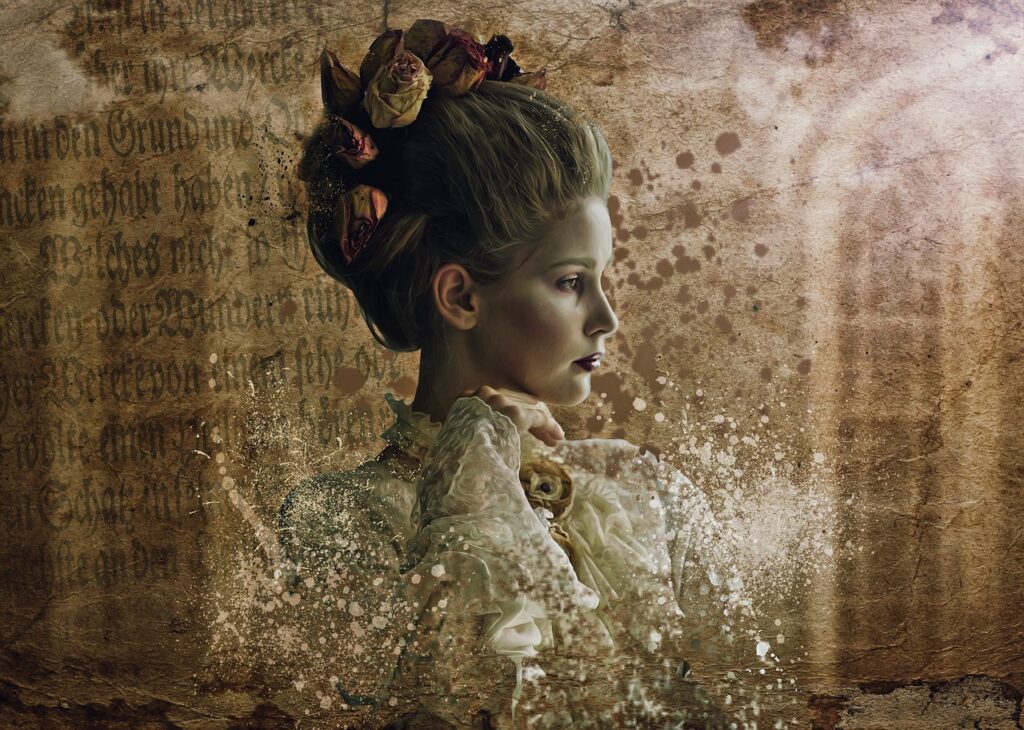
Exploring Different Horror Themes
Diving into the vast expanse of horror fiction, we encounter a diverse array of horror themes that cater to our deepest fears and insatiable curiosity. Within this labyrinth, two prominent paths beckon—the enigmatic realm of psychological horror and the mesmerizing allure of supernatural terror.
Psychological Horror Themes: Unraveling the Mind’s Mysteries
Imagine a world where the boundaries of reality blur and the mind itself becomes a treacherous landscape. This is the realm of psychological horror, where the theme of horror transcends the physical and delves into the labyrinthine corridors of the mind. It’s a genre that unearths the complexities of human psychology, unravelling the layers of fear, paranoia, and obsession that can fester within us all.
In psychological horror, the monsters are not always external; they might be the demons lurking within our thoughts or the phantoms of our past. This theme invites readers to confront the unease that stems from the unknown corners of their own minds, fostering a chilling connection between the characters and the audience. Through meticulously crafted suspense and psychological tension, this theme has the power to leave readers questioning their own perceptions long after the story ends.
Supernatural Horror Themes: Tapping into the Unseen
The supernatural realm casts an irresistible spell upon the genre of horror fiction. Within its grasp, the ordinary world collides with forces that defy explanation, from malevolent spirits to cosmic entities beyond comprehension. A horror theme steeped in the supernatural invites readers to embrace the inexplicable and confront the unnerving notion that reality is not as it seems.
Supernatural horror is a realm where the rules of nature are bent and broken, where the line between the living and the dead blurs, and where the fabric of reality is rent asunder. Through this theme, writers harness the power of the unknown to create an atmosphere of dread, using otherworldly elements to amplify fear and tension. Whether it’s a haunted house, a cursed artifact, or a portal to dimensions beyond, the supernatural theme opens doors to terror that defy earthly explanation.
By choosing between these divergent paths—psychological horror and supernatural terror—you shape your novel’s identity and lay the groundwork for an unforgettable reading experience. The question now becomes: Which path will you tread to weave the tapestry of your horror theme? Will you delve into the depths of the human psyche, or will you invoke the forces that lie beyond the veil of the natural world? As you navigate this choice, remember that each theme carries its own set of tools to captivate your audience, and the journey you undertake will determine the nightmares that linger in their minds.
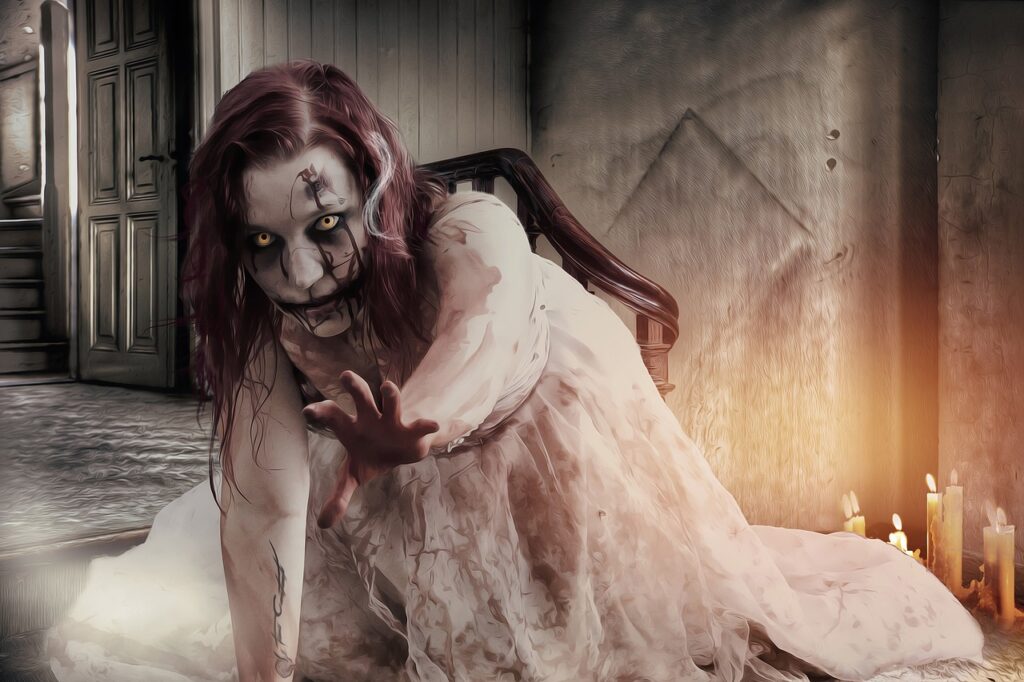
Blending Horror Themes for Depth
In the realm of horror fiction, where fear and imagination intertwine, the art of crafting a captivating narrative often involves more than a single brushstroke. As we explore the realm of horror themes, we uncover the powerful technique of blending multiple themes to create layers of depth and complexity that resonate with readers on profound levels.
By intertwining themes, you unlock the potential to evoke a symphony of emotions that traverse the spectrum of fear. The horror theme becomes a canvas where psychological unease intertwines with supernatural terror, resulting in a story that defies simplistic categorization. Blending these themes is akin to weaving different threads of fear, seamlessly merging the mundane with the extraordinary.
Consider a tale where the psychological horror of a character’s internal struggles intersects with the supernatural forces that lurk in the shadows. This convergence imbues the narrative with a multidimensional quality, enhancing the tension and encouraging readers to explore the darkest corners of the human experience. Such narratives invite us to ponder the interplay between the mind’s fragility and the universe’s enigmatic forces, elevating the storytelling to a level of complexity that mirrors the intricacies of our own fears.
Successful authors have masterfully wielded the art of blending themes to forge narratives that linger long after the final page. Novels like “The Haunting of Hill House” by Shirley Jackson and “Bird Box” by Josh Malerman intertwine psychological and supernatural elements to create stories that unsettle both the mind and the soul. These examples showcase the potential of fusing themes to construct narratives that resonate deeply with readers, showcasing the inherent duality of the human experience—our innermost thoughts and the unknown that lies beyond our perception.
As you tread the path of storytelling, consider the symphony of emotions you wish to evoke in your readers. Dare to blend themes in a way that awakens a myriad of fears, tapping into the fears that emerge from the recesses of the mind and those that emerge from the realm of the supernatural. Through this skillful fusion, you can forge a narrative that resonates on multiple levels, immersing your audience in a journey that transcends the ordinary and unearths the extraordinary.
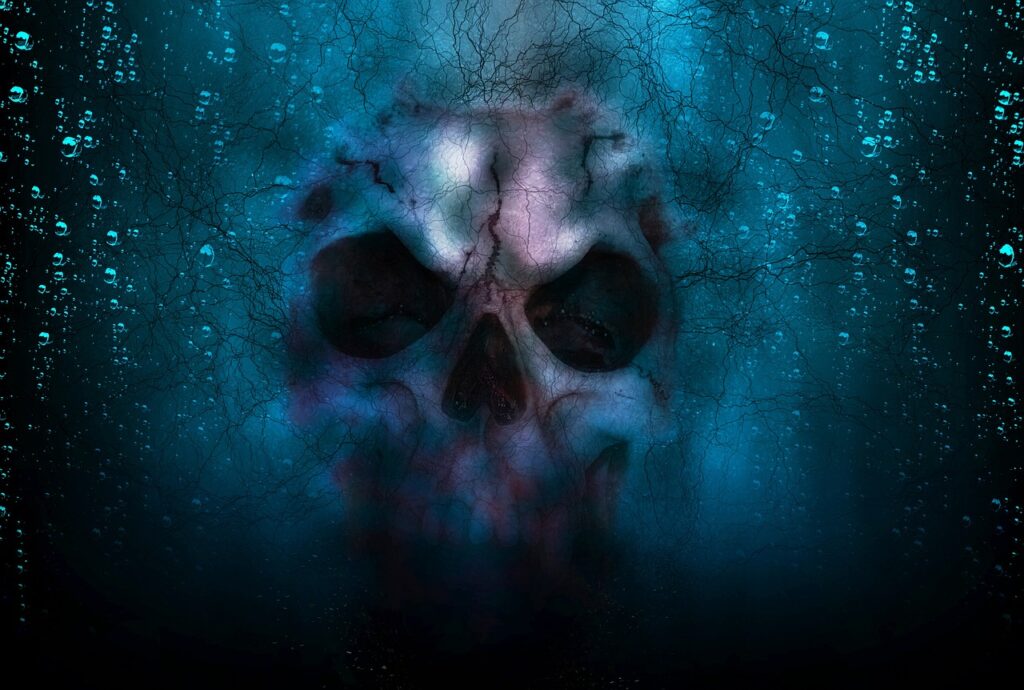
Matching the Theme to Your Story
Crafting a compelling horror narrative requires more than a mere assembly of scares and shocks—it necessitates a delicate interplay between your story’s essence and the chosen horror theme. Just as a masterful composer selects the right notes to create a symphony, you, as a storyteller, must choose the theme of horror that harmonizes with your story’s core concept and message.
Before diving into the abyss of terror, take a moment to understand the beating heart of your narrative. What is the essence you wish to convey? What message do you hope to leave imprinted in the minds of your readers? This introspection is crucial, as the chosen horror theme will serve as the vessel through which these sentiments are channeled. It will infuse your story with a pulse, guiding the pacing, atmosphere, and emotional resonance that unfold with each turn of the page.
When selecting the perfect horror theme, consider the symphony of emotions you intend to evoke. Is your aim to evoke introspection and psychological unease? Or do you seek to transport readers to a realm where the impossible becomes possible, and the veil between worlds is tantalizingly thin? By identifying the tone and emotional impact you aspire to achieve, you pave the way to aligning your narrative goals with the theme that resonates most powerfully.
Imagine your story as a puzzle waiting to be assembled, and the horror theme as the missing piece that completes the picture. By ensuring this piece fits seamlessly, you provide readers with an experience that’s immersive and unforgettable. Whether your tale leads them through the labyrinth of the mind or guides them into the realm of the supernatural, the theme you choose will be the guiding light that leads the way.
In the intricate dance of storytelling, your role as a writer is to orchestrate the elements in a way that creates a tapestry of fear and fascination. It’s a symphony in which the theme of horror takes center stage, resonating with the emotions you wish to evoke. As you embark on this creative journey, remember that the right theme has the power to elevate your narrative to heights you never thought possible, turning your novel into an experience that lingers in the reader’s mind long after the final word has been read.
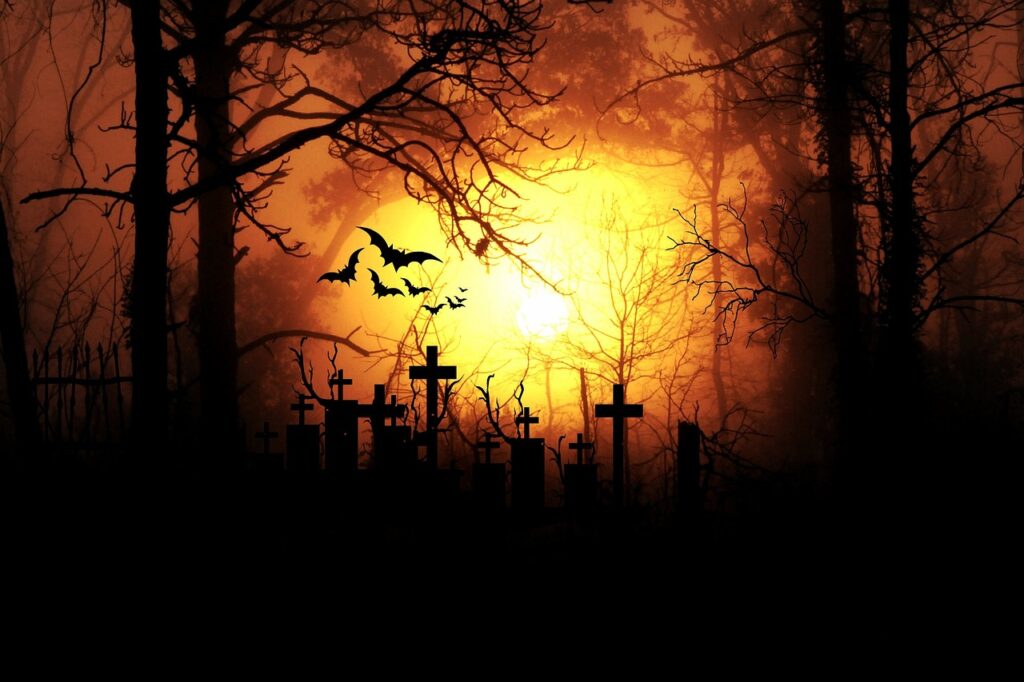
Creating Emotional Impact
At the core of every gripping horror tale lies the innate desire to evoke emotions that range from a shiver down the spine to an accelerated heartbeat. The selection of a horror theme isn’t just about crafting a chilling backdrop; it’s about creating a symphony of emotions that resonate deeply with your readers. By understanding how different themes evoke specific emotional responses, you can harness the power of the right theme to amplify the emotional impact of your novel.
Each horror theme serves as a conduit to different facets of human emotion. A psychological horror theme, for instance, delves into the recesses of the human psyche, stirring feelings of vulnerability, paranoia, and dread. By weaving a narrative that explores the fragility of the mind, you invite readers to experience empathy with characters who navigate the labyrinthine corridors of their fears.
On the other hand, a supernatural horror theme taps into the fascination with the unknown, conjuring feelings of awe, apprehension, and a sense of wonder tinged with trepidation. The inclusion of supernatural elements elevates the sense of mystery and intrigue, immersing readers in a world where the boundaries of reality are blurred, and the rules of nature are bent.
As a storyteller, your canvas is the emotional landscape of your readers’ minds. The choice of a horror theme allows you to paint strokes of fear, curiosity, and anticipation, creating an intricate tapestry of emotions that captivates and terrifies. By aligning the theme with the emotional journey you intend to take your readers on, you grant them the gift of an experience that lingers long after they’ve closed the book.
In the grand tapestry of horror fiction, the theme you choose serves as the brush that paints the canvas of emotion. It amplifies the atmosphere, accentuates the tension, and leaves an indelible mark on your audience. By skillfully manipulating the emotional responses of your readers, you become the conductor of a symphony of fear, weaving together a melody that resonates deeply and etches your narrative into the minds and hearts of those who dare to venture into your world.
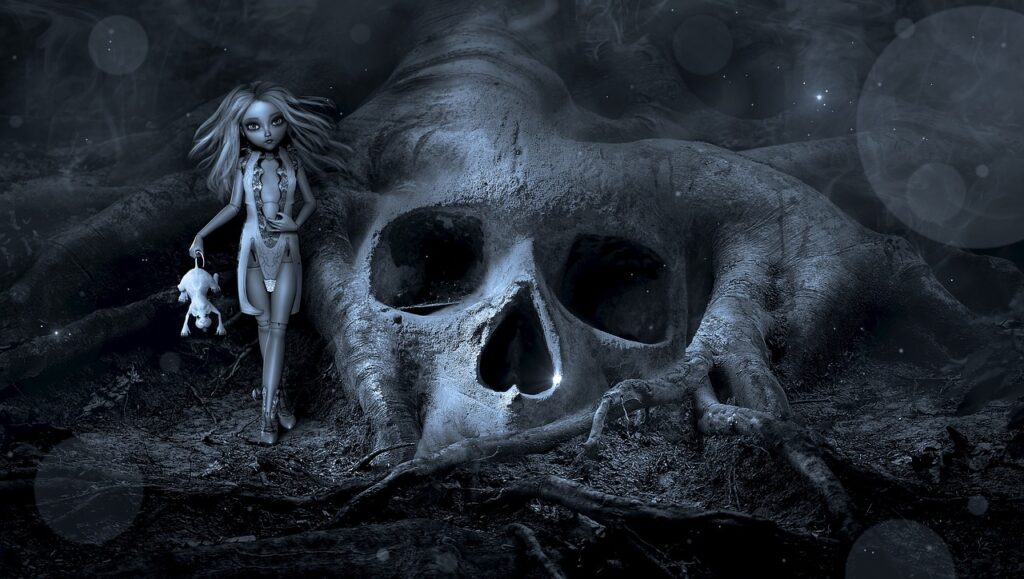
Research and Inspiration
As you embark on the journey of sculpting a narrative infused with the essence of fear, it’s essential to recognize that crafting an immersive horror theme requires more than imagination alone. To create a truly authentic and spine-tingling experience, you must delve into the realms of research and draw inspiration from a wellspring of sources.
Conducting thorough research is akin to navigating the labyrinthine corridors of your chosen horror theme. Whether you’re exploring the intricacies of psychological horror or embracing the supernatural unknown, diving into research allows you to glean insights into the depths of your theme’s nuances. It enables you to understand the fears, anxieties, and curiosities that underpin your chosen narrative direction.
Classic horror literature serves as an invaluable treasure trove of inspiration. Works by literary giants like Edgar Allan Poe, H.P. Lovecraft, and Mary Shelley offer a masterclass in the art of infusing horror themes with an indelible mark of brilliance. Their stories, steeped in psychological unease and supernatural mystique, provide a foundation from which you can draw inspiration and learn the art of chilling storytelling.
Yet, the world of horror is not confined to the past. Contemporary authors have forged new paths within the genre, infusing traditional themes with modern sensibilities. Their works offer insights into how to marry age-old fears with contemporary contexts, creating narratives that resonate with today’s readers while honouring the legacy of horror fiction.
By drawing from both classic and contemporary sources, you enrich your toolkit as a storyteller. You become equipped not only with the technical know-how to execute your chosen horror theme effectively but also with the creative ingenuity to breathe life into it. As you stand on the precipice of crafting a tale that will linger in the minds of your readers, remember that your journey is not solitary. You’re joined by a lineage of horror authors who have dared to explore the boundaries of fear, and by learning from their footsteps, you empower yourself to create a story that is both timeless and cutting-edge.
So, immerse yourself in the worlds of the macabre, traverse the landscapes of fear, and let the insights from your research and the echoes of literary masters guide your creative process. By doing so, you set the stage for a tale that transcends mere entertainment, immersing readers in a narrative that speaks to the darkest corners of the human psyche and the boundless realms of the unknown.
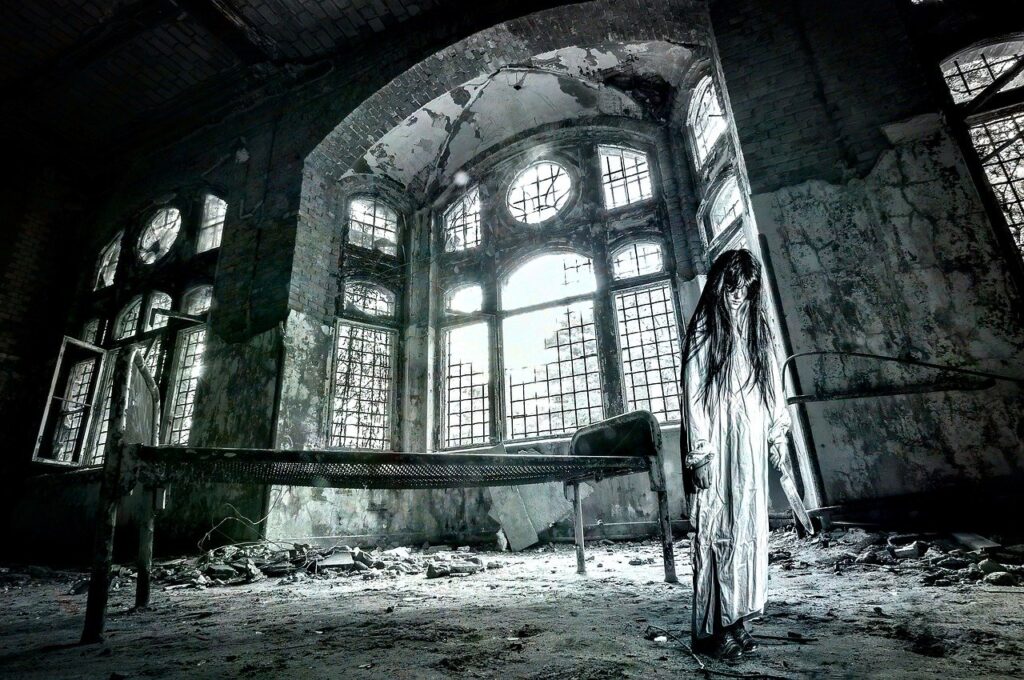
Crafting Unique Horror Experiences
In the vast expanse of horror fiction, where shadows dance and fears take form, the art of crafting a memorable narrative lies in the ability to create a story that stands out amidst a sea of chilling tales. As we delve deeper into the exploration of horror themes, we uncover the importance of tailoring your chosen theme to offer a unique and unforgettable experience for your readers.
While certain themes may have been explored before, the magic lies in your ability to infuse them with your distinctive voice and perspective. A horror theme becomes a canvas upon which you wield the brush of originality, painting strokes that distinguish your narrative from the rest. By injecting your creative vision into your chosen theme, you invite readers to embark on a journey that is as fresh as it is fearsome.
Embrace the challenge of subverting expectations within familiar themes. Consider how you can breathe new life into time-honoured concepts, offering twists and turns that keep your audience on the edge of their seats. Whether you’re navigating the labyrinthine corridors of a haunted mansion or unravelling the enigma of a malevolent spirit, the key is to infuse your narrative with unexpected angles and layers of depth that evoke a sense of wonder and unease.
In the realm of horror storytelling, originality serves as your most potent weapon against predictability. It’s the catalyst that turns your narrative into an experience that resonates deeply with readers, leaving an indelible mark on their psyche. By embracing your unique perspective and infusing it into your chosen horror theme, you not only ensure your story’s relevance but also open the door to reinventing the genre itself.
Remember, as you embark on the quest to craft a horror narrative that defies conventions, it’s your voice that shapes the narrative. Your creativity will guide readers through the darkness, leading them toward revelations that linger long after the final page. As you breathe life into your horror theme, celebrate the power of your imagination and dare to create a tale that stands as a testament to the boundless potential of originality within the realm of horror fiction.
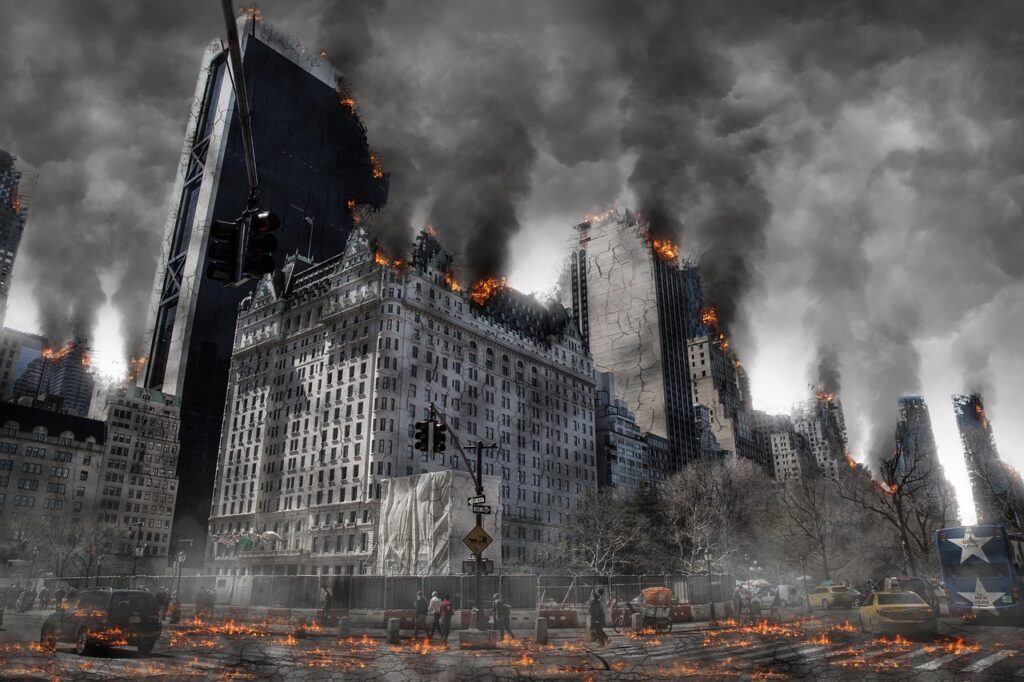
Common Pitfalls to Avoid
In the intricate dance of horror storytelling, where the line between fear and fascination is often razor-thin, it’s crucial to navigate your chosen horror theme with skill and finesse. As we continue our exploration of the world of horror, we must also shine a light on the common pitfalls and clichés that can entangle even the most seasoned writers. By identifying these hazards, we equip ourselves with the knowledge to traverse them while staying true to our creative vision.
Every horror theme has its set of clichés that can lead a narrative down a well-trodden and predictable path. From jump scares that lose their impact to stereotypical characters that fail to resonate, these pitfalls can diminish the immersive experience you’re striving to create. It’s important to recognize these clichés and challenge yourself to transcend them, infusing your narrative with unexpected twists that breathe new life into the familiar.
Navigating potential pitfalls requires a balance between respecting the genre’s conventions and pushing its boundaries. Embrace the nuances of your chosen theme while striving to subvert expectations. For instance, if your tale embraces the supernatural, consider how you can present the unknown in a way that defies convention, tapping into the realm of cosmic horror or exploring lesser-known mythologies.
Staying true to your creative vision is paramount. As you venture into the depths of horror, remember that your voice is what sets your narrative apart. While it’s wise to learn from the lessons of the past and the advice of seasoned authors, true magic happens when you meld your unique perspective with the essence of your chosen horror theme. By recognizing and avoiding common pitfalls, you pave the way for a narrative that’s not only gripping but also groundbreaking.
As you pen your tale of terror, tread the path of originality and embrace the challenge of crafting a narrative that transcends clichés. Every pitfall you avoid, and every unexpected turn you take serves as a brushstroke on the canvas of your creative journey. By weaving a story that defies expectations, you contribute to the evolution of horror fiction, leaving a legacy that beckons future writers to explore the uncharted territories of fear and fascination.
Here are the bullet points summarizing the common pitfalls to avoid with horror themes in novels or stories:
- Beware of clichés and predictable elements associated with certain horror themes.
- Steer clear of overused jump scares and stereotypical characters that can weaken the impact.
- Challenge yourself to subvert expectations within familiar themes.
- Aim to infuse your narrative with unexpected twists that defy conventional storytelling.
- Balance between respecting genre conventions and pushing creative boundaries.
- Embrace the nuances of your chosen theme while striving for originality.
- Stay true to your creative vision and voice while learning from past lessons.
- Strive to transcend clichés and breathe new life into time-honoured concepts.
- Remember that your unique perspective sets your narrative apart from the rest.
- Infuse your story with unexpected angles and layers of depth to captivate readers’ attention.
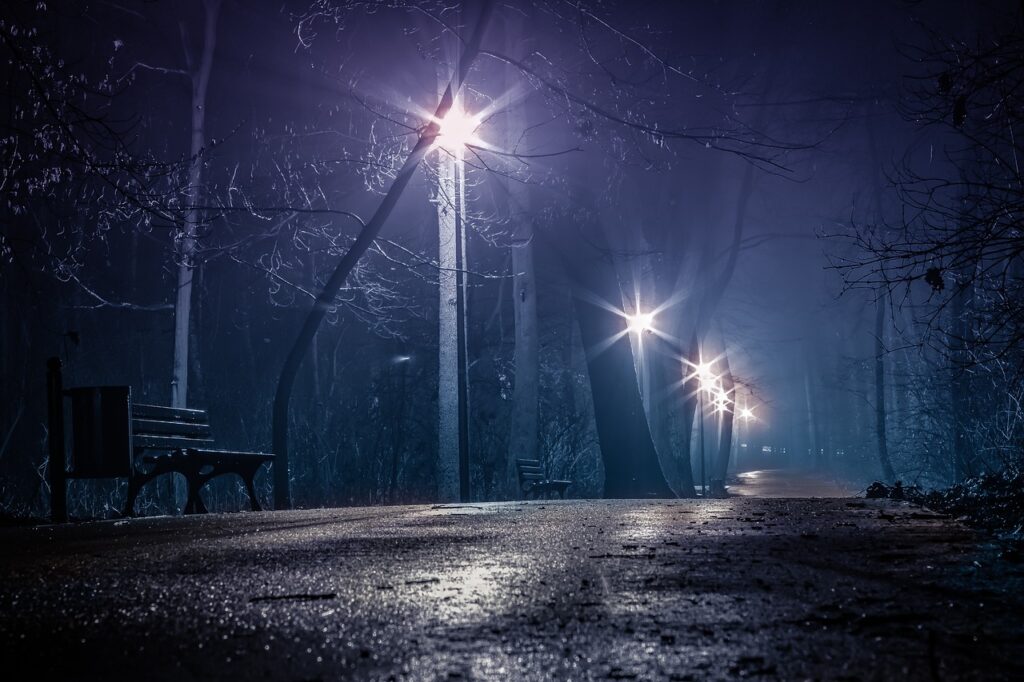
Balancing Fear and Creativity
Within the realm of horror fiction, the delicate dance between fear and creativity shapes narratives that linger in the shadows of readers’ minds. As we navigate through the intricacies of horror themes, we must consider the art of harmonizing the primal need for fear and suspense with the tapestry of creative storytelling. This equilibrium, where terror and imagination intertwine, serves as the fulcrum upon which unforgettable narratives are forged.
The allure of horror lies in its capacity to evoke visceral emotions—those heart-pounding moments that make us question the darkness that resides within ourselves and our world. The horror theme is the conduit through which these emotions flow, and fear acts as the engine that propels the narrative forward. Yet, this propulsion must be met with an equally compelling and innovative narrative structure.
Balancing fear with creativity necessitates an exploration of the uncharted. Push the boundaries of conventional horror storytelling, weaving unexpected twists and layering your narrative with layers of intrigue. Consider how your horror theme can challenge not only the minds of your characters but also the expectations of your readers. Seek the sweet spot where fear and fascination meet, creating a synergy that keeps the pages turning even as hearts race.
As a writer, you’re the architect of worlds both eerie and enchanting. Encourage yourself to embrace the unfamiliar and to explore corners of your chosen theme that others might shy away from. A novel that marries fear with creativity stands as a testament to the power of storytelling to elicit a range of emotions, transcending the boundaries of fear and leaving a lasting impact on readers.
So, as you continue your journey of crafting a narrative that unearths terror and teems with imagination, remember that true magic happens when you achieve equilibrium. It’s the magic that propels your readers through the darkest twists and turns, where fear and creativity join hands in a dance that is as exhilarating as it is haunting. As you write, let your creativity flow as freely as the fear, and together they will paint a picture that resonates long after the final words have been read.
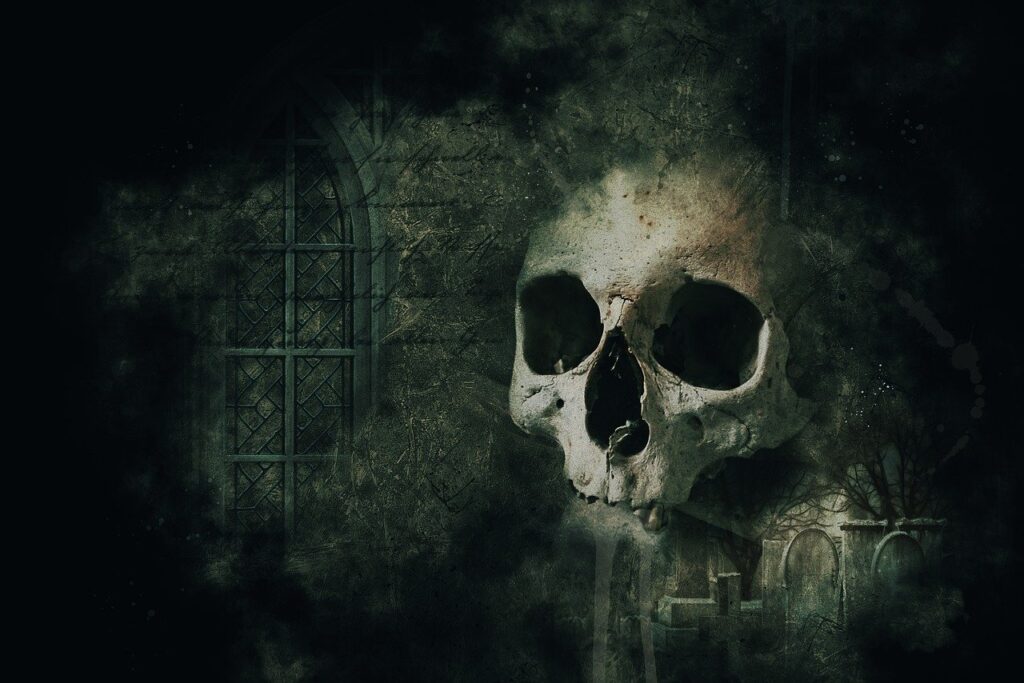
Fearsome Finales: Crafting Horror Themes That Haunt and Captivate
As we unravel the intricacies of selecting the perfect horror theme for your novel, it’s crucial to recognize the power it holds in shaping an unforgettable narrative. We’ve delved into the depths of different themes, discussed the nuances of blending them, and offered insights into navigating potential pitfalls. The journey of crafting a chilling tale is as much about fear as it is about creativity, and the interplay between these elements is what breathes life into your story.
Balancing Fear and Creativity is an art that every writer in the horror genre must master. It’s the dance between the known and the unknown, the familiar and the unexpected. By embracing the harmonious symphony of terror and imagination, you create narratives that linger in the minds of your readers, leaving them haunted by the echoes of your words.
Be Part of the Experience!
We invite you to become part of this ongoing exploration of horror storytelling. Share your thoughts and insights on horror themes in the comments below. For those eager to catch up on the series or revisit the beginning, you can find the first article, “Embarking on a Journey of Terror: An Introduction to Writing Horror Novels,” in our series plugin at the start of this article.
Stay tuned for the next installment in our horror writing series, where we’ll continue to unravel the mysteries of crafting chilling tales that captivate and terrify. Don’t miss the chance to participate in our Call for Horror Novel Submissions, open until August 31, 2023. Your haunting stories could find a home in the world of horror fiction, where fear and creativity intertwine to create an experience that lingers long after the final page.


